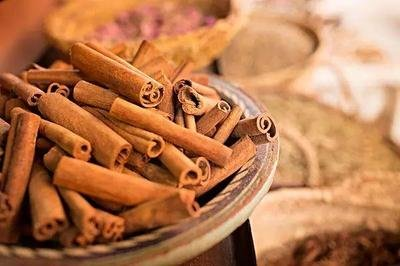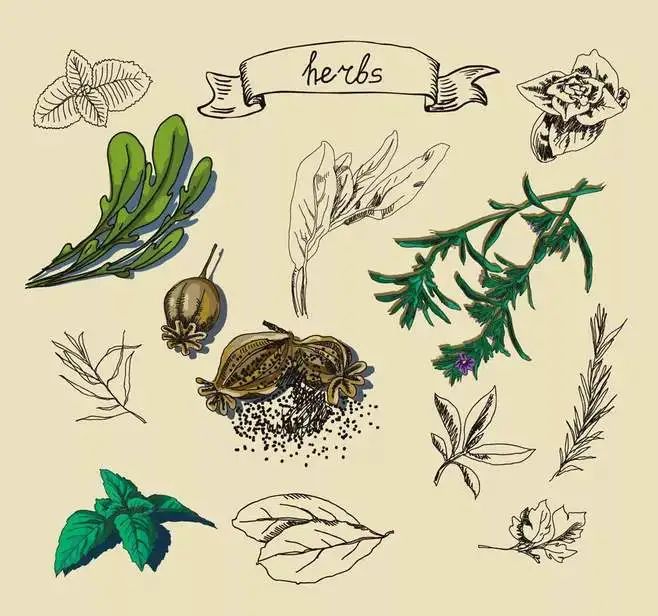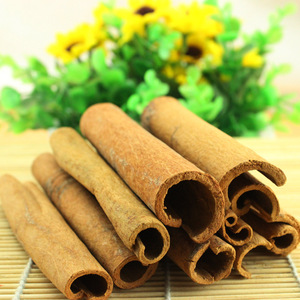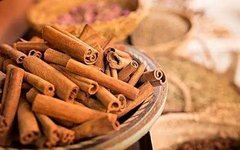


Rou Gui (Cinnamon)



Rou Gui, also known as Mu Gui, Da Gui, Gui Pi, and Yu Gui, is characterized by its thick bark, purple-red cross-section, and high oil content. The best quality has a strong aroma, sweet and slightly spicy flavor, and leaves no residue when chewed.
Rou Gui was first recorded in the Shen Nong Ben Cao Jing (Shen Nong’s Classic of Materia Medica), and has been documented in various herbal texts throughout history. Li Shizhen noted that all wood leaves have a single longitudinal vein, but cinnamon has two veins resembling a gui shape, hence its name. Its color resembles meat, which is why it is called Rou Gui. Originally from India, Laos, Vietnam, and Indonesia, it is now widely cultivated in Guangdong, Guangxi, Fujian, Taiwan, Yunnan, and other tropical regions..

1
“The Story of Rou Gui”
 In 333 BC, Alexander the Great of Macedonia first occupied the original habitat of aloe on Socotra Island, acquiring a large strategic reserve of aloe. During his eastern expedition, it is said that one of China’s four great beauties, Xi Shi, suddenly felt a sore throat while playing the zither and singing, and took a large amount of heat-clearing and fire-purging medicine. Although there was some improvement, it frequently recurred. After examination, the doctor noted her limbs were cold, her urine was clear and long, and her pulse was deep and thin, and prescribed one pound of Rou Gui. The pharmacy owner was puzzled and said, “A sore throat with swelling and ulceration is a condition of great heat; how can one consume the spicy and warming Rou Gui?” After taking it, Xi Shi’s sore throat surprisingly disappeared, and she was very pleased. The famous doctor said, “Xi Shi’s ailment is a cold and deficient yin fire throat disease; it cannot be treated without using the method of guiding fire back to the source.” King Alexander ordered the carrying of a large amount of aloe for wartime needs, using it to treat wounded soldiers, allowing festering wounds to heal, and also using it to treat soldiers’ acclimatization issues, thus enhancing their combat effectiveness. It can be said that King Alexander established a vast empire spanning Europe, Asia, and Africa, with aloe playing an indispensable role.
In 333 BC, Alexander the Great of Macedonia first occupied the original habitat of aloe on Socotra Island, acquiring a large strategic reserve of aloe. During his eastern expedition, it is said that one of China’s four great beauties, Xi Shi, suddenly felt a sore throat while playing the zither and singing, and took a large amount of heat-clearing and fire-purging medicine. Although there was some improvement, it frequently recurred. After examination, the doctor noted her limbs were cold, her urine was clear and long, and her pulse was deep and thin, and prescribed one pound of Rou Gui. The pharmacy owner was puzzled and said, “A sore throat with swelling and ulceration is a condition of great heat; how can one consume the spicy and warming Rou Gui?” After taking it, Xi Shi’s sore throat surprisingly disappeared, and she was very pleased. The famous doctor said, “Xi Shi’s ailment is a cold and deficient yin fire throat disease; it cannot be treated without using the method of guiding fire back to the source.” King Alexander ordered the carrying of a large amount of aloe for wartime needs, using it to treat wounded soldiers, allowing festering wounds to heal, and also using it to treat soldiers’ acclimatization issues, thus enhancing their combat effectiveness. It can be said that King Alexander established a vast empire spanning Europe, Asia, and Africa, with aloe playing an indispensable role.
2
Growth Climate and Geographic Location
 Rou Gui prefers a humid environment, requiring abundant and evenly distributed rainfall. The areas of Luxian and Nanxi in southern Sichuan meet Rou Gui’s moisture requirements. The growth environment requires an average annual temperature above 20°C, annual rainfall of 1200-2000mm, an average relative humidity of about 80%, and a foggy environment, while being sensitive to frost and snow.
Rou Gui prefers a humid environment, requiring abundant and evenly distributed rainfall. The areas of Luxian and Nanxi in southern Sichuan meet Rou Gui’s moisture requirements. The growth environment requires an average annual temperature above 20°C, annual rainfall of 1200-2000mm, an average relative humidity of about 80%, and a foggy environment, while being sensitive to frost and snow.
3
Properties and Meridians (Chinese Pharmacopoeia)
 【Main Properties】 Spicy, sweet, and very warm. It enters the Kidney, Spleen, Heart, and Liver meridians.【Basic Effects】 Tonifies fire and assists yang, guides fire back to the source, disperses cold and alleviates pain, warms and unblocks the meridians. Used for impotence due to cold in the palace, cold pain in the lower back and knees, kidney deficiency causing wheezing, floating yang, dizziness, red eyes, cold pain in the heart and abdomen, vomiting and diarrhea due to cold, cold hernia abdominal pain, and dysmenorrhea.【Materia Medica Summary】 The Ben Cao Hui Yan states, “Rou Gui is a medicine for treating deep cold and stubborn cold. It is used for deficiency of yang leading to counterflow, or for heart and abdominal pain with vomiting and diarrhea, or for long-term deficiency of heart and kidney leading to stubborn cold and fear of cold, or for cold hernia causing severe pain, or for cold in the stomach causing fullness and distension, or for cold and stagnant qi and blood obstructing the meridians. This flavor is thick, sweet, spicy, and very warm, guiding downward and moving inward, strengthening the yang of the life gate, nourishing the qi of the heart and kidneys, and promoting the efficacy of all medicines, making the yang strong so that the yin naturally dissipates, thus alleviating the aforementioned symptoms.”
【Main Properties】 Spicy, sweet, and very warm. It enters the Kidney, Spleen, Heart, and Liver meridians.【Basic Effects】 Tonifies fire and assists yang, guides fire back to the source, disperses cold and alleviates pain, warms and unblocks the meridians. Used for impotence due to cold in the palace, cold pain in the lower back and knees, kidney deficiency causing wheezing, floating yang, dizziness, red eyes, cold pain in the heart and abdomen, vomiting and diarrhea due to cold, cold hernia abdominal pain, and dysmenorrhea.【Materia Medica Summary】 The Ben Cao Hui Yan states, “Rou Gui is a medicine for treating deep cold and stubborn cold. It is used for deficiency of yang leading to counterflow, or for heart and abdominal pain with vomiting and diarrhea, or for long-term deficiency of heart and kidney leading to stubborn cold and fear of cold, or for cold hernia causing severe pain, or for cold in the stomach causing fullness and distension, or for cold and stagnant qi and blood obstructing the meridians. This flavor is thick, sweet, spicy, and very warm, guiding downward and moving inward, strengthening the yang of the life gate, nourishing the qi of the heart and kidneys, and promoting the efficacy of all medicines, making the yang strong so that the yin naturally dissipates, thus alleviating the aforementioned symptoms.”
4
Rou Gui Health-Promoting Diet

Rou Gui Red Date Rock Candy Tea
【Ingredients】 2g of Rou Gui, 8 red dates, 20 peanuts, and appropriate amount of rock candy. Cook the peanuts until soft, then add Rou Gui, rock candy, and red dates, and simmer for 10 minutes. Drink as tea, divided into morning and afternoon servings.
【Effects】 Rou Gui is very warming, tonifying the stomach and spleen, alleviating stomach pain and diarrhea, and is beneficial for those with weak kidney yang. Those with yin deficiency and excess fire should avoid it, and pregnant women should use it cautiously.
Rou Gui Porridge
【Ingredients】 60g of japonica rice and 5g of Rou Gui powder.
【Effects】 Warms the center and tonifies yang. Suitable for cold in the palace causing infertility and cold pain during menstruation.

END
Planning | New Media Department of the Pharmaceutical Student Association
Image and Text Source | Yaoquan Network
Editing | Liu Jina
Review | Wu Jiahui
Guiding Teacher | An Lijun

If you like this article, please give me a thumbs up!

